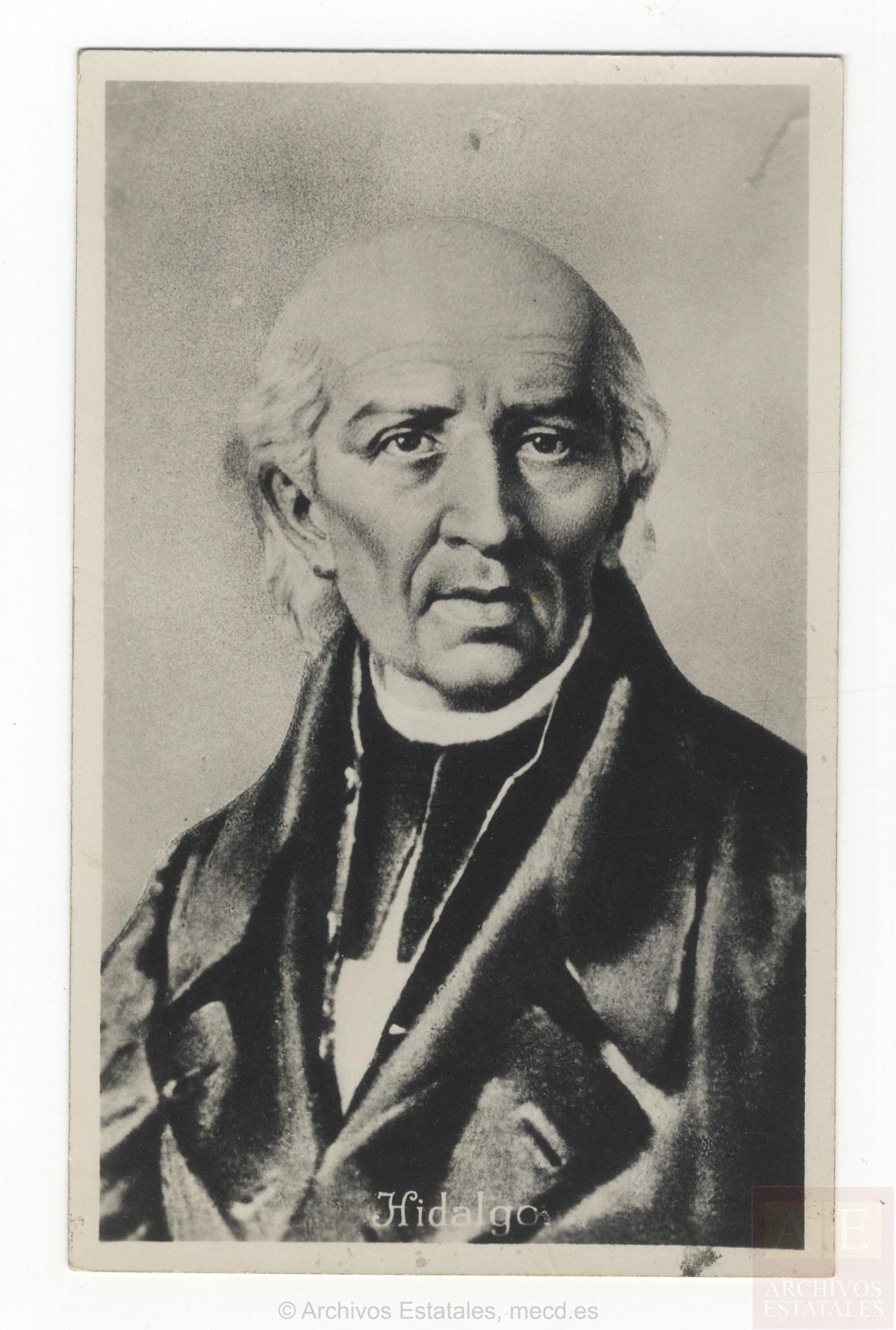 Persona - Hidalgo Costilla, Miguel (1753-1811)
Persona - Hidalgo Costilla, Miguel (1753-1811)
Identificación
Tipo:
Persona
Forma autorizada:
Hidalgo Costilla, Miguel (1753-1811)Otras formas
Fechas de existencia:
Guanajuato (México) 1753-05-08 - 1811-07-30
Historia:
Sacerdote y revolucionario novohispano, que destacó iniciando la primera etapa de la Guerra de Independencia de México.
Nació en 1753. Hijo de Cristóbal Hidalgo Costilla y de Ana María de Gallaga. Realizó sus estudios eclesiásticos, en el colegio de San Nicolás de Valladolid (actual Morelia), del que posteriormente fue profesor y Rector, ordenado Sacerdote en 1788, desempeñó diversos curatos hasta ser destinado en el pueblo de Dolores. Influído por ilustrados franceses, se dedicó al fomento de la agricultura, con el fin, de elevar el nivel de vida de los indios. Al principio de 1810, entró a formar parte de la conspiración que pretendía derrocar al afrancesado Virrey Javier Venegas (1754-1838) y convocar un congreso, para reconocer como soberano a Fernando VII. Descubierta la conspiración, junto a Ignacio Allende (1769-1811) y otros patriotas, inició la sublevación, en Dolores, la noche del 15 al 16 de septiembre de 1810 (¿Grito de Dolores¿), que significó el inicio de la lucha por la independencia mexicana. Al frente de 300 criollos, tomó San Miguel el Grande, que al dar al movimiento emancipador, una dimensión de reforma social y de superación de barreras raciales, se agruparon en torno a él, la mayoría de los indios de la región. El 22 de septiembre, tras ocupar Celaya es nombrado Capitán General e investido, de la Suprema Autoridad Política y Militar, mientras su lugarteniente Allende, desempeñaba el cargo de Teniente General. La excomunión del obispo de Michoacán, Abad y Queipo, y del de México, Lizana (24 de septiembre), no impidió el avance sobre Guanajuato, que fue ocupado, después del combate de Alhóndiga de Granaditas (28 de septiembre). Continuando con su programa de reformas, abolió la esclavitud, el tributo de los indios y los impuestos, sobre el Pulque. Las fuerzas de Hidalgo, aumentaron rápidamente, principalmente por el número de indios que se unieron, quienes se lanzaron a la lucha, sin distinguir entre criollos y peninsulares. Posteriormente, se decretó la confiscación de los bienes de los europeos y la reducción de las alcabalas, estas medidas originaron que la aristocracia criolla, favorable a la emancipación hasta 1810, al ver el carácter de guerra de castas que adquiría el movimiento insurgente, se unieron al Virrey y a los realistas, ya que, peligraba el régimen latifundista, del que ellos eran beneficiarios. El 15 de octubre, entra en Valladolid y poco después, en el Monte de las Cruces, derrota al ejército realista en Trujillo (30 de octubre). De esta forma, quedó abierto el camino hacia la capital, pero Hidalgo decidió, en contra de la opinión de Allende y de los restantes jefes militares, no avanzar, por considerar que sus tropas no aguantarían otro combate y ordenó la retirada hacia Guadalajara. La retirada hacia Querétaro significó el declive del movimiento emancipador y muchos partidarios, empezaron a desertar. En cambio, los realistas se reorganizaron y pusieron sus fuerzas bajo la vocación de la Virgen de los Remedios. Agrupados los ejércitos realistas, bajo la dirección del General español, Félix María Calleja del Rey (1753-1828), vencieron en Aculco (7 de noviembre), al dispersarse, los patriotas prácticamente sin combatir. Hidalgo, marchó a Guadalajara, donde formó un gobierno Nacional que publicó más decretos administrativos y tributarios (extinción de los estancos de la pólvora, tabaco y papel sellado ...). Calleja, llegó a Guadalajara y en el Puente de Calderón, derrotó a las tropas de Hidalgo (15 de enero de 1811). Perdida Guadalajara, los caudillos de la independencia, hubieron de escapar a Zacatecas, donde Allende y otros dirigentes depusieron, aunque no se hiciera público a Hidalgo de sus cargos debido a su incapacidad militar. Marchó a los Estados Unidos para buscar apoyo pero, fue apresado por Ignacio Elionzo en Acatita de Baján (21 de marzo). Conducido a Chihuahua, fue sometido a un proceso civil y eclesiástico, condenado a muerte y fusilado.
Ocupaciones
Conceptos/Objetos/Acontecimientos
Fuentes
Relaciones
Relaciones temporales :
Relaciones asociativas :
Enlaces Externos
Biografía virtual:
Catálogo de Autoridades:
Fichero de Autoridades:
Fichero de Autoridades:
Documentos
Productor de:
- No hay Unidades de Descripción asociadas.






